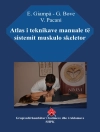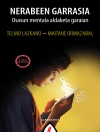Human Trafficking: A Treatment Guide for Mental Health Professionals is the first book on human trafficking and mental health. The editors have marshalled their considerable experience developing resources and interventional programs for this patient population, as well as expertise in research and scholarly writing, to create a unique — and uniquely useful — guide for clinicians likely to encounter trafficked patients. Foundational to the effort is recognizing that their numbers are legion, and growing, and that their safety and well-being depends on the ability of clinicians to screen, assess, and identify them in a system that often constructs barriers to care. Epidemiological data is provided to help clinicians understand the factors that contribute to being trafficked, the associated consequences, and the role of health professionals in combatting it. Screening processes are discussed, and potential barriers, both organizational and provider-based, to the identification of trafficked persons are explored. The next section addresses sensitive, trauma-informed, and integrated patient management in different settings, including emergency departments, primary care, and substance abuse facilities, since both medical and substance abuse comorbidities are common in trafficked patients. The trauma-informed concepts of asking, respecting, and responding are vital components to the survivor-centered care emphasized by the authors, and psychotherapeutic considerations and cultural aspects in the assessment and treatment of these patients — topics that have been neglected heretofore — are discussed in-depth. Finally, advocacy, confidentiality, and reporting requirements for adult and child patients are addressed, providing a much-needed legal and ethical framework.
The chapters have clearly outlined objectives that are achieved through a number of useful features: Each chapter includes clinical cases that encapsulate the trauma and horror of the real-life fallout from human trafficking. These vignettes deftly illustrate and contextualize the chapter’s topic, such as managing co-occurring substance use disorders or identifying the trafficked person who presents in the emergency department. Chapters are equipped with ‘pearls and pointers’ that summarize key points and highlight the most important take-aways. Contributors make ample use of visual aids, such as tables and figures, that enhance understanding and consolidate information into readily accessible formats. Ten vivid, real-life case scenarios are offered in the final chapter, providing the clinicians with insights into trafficked persons’ health care interactions, questions to increase sensitivity and help identify these patients, and counsel on managing their care with empathy and patience.
Often shocking, frequently poignant, and always useful, Human Trafficking: A Treatment Guide for Mental Health Professionals teaches clinicians to look at their patients with fresh, informed, and compassionate eyes.
Table of Content
Chapter 1. Becoming a Trafficked Person Chapter 2. Epidemiology of Human Trafficking: The Complexities and Intersections of Vulnerability, Risk, and Exploitation Chapter 3. By the Right Name: What Does It Actually Mean to ‘Screen’ and ‘Assess’ for Trafficking in Health Care?Chapter 4. Barriers to Identification of Trafficked Persons in Health Care Settings Chapter 5. Emergency Department Management of Trafficked Persons Chapter 6. Managing Trafficked Persons With Comorbid Medical Conditions Chapter 7. General Principles of Care for Trafficked Persons Chapter 8. Responding to Trafficked Persons in Heath Care Settings: Patient-Centered, Survivor-Centered Care Chapter 9. Care Management of Trafficked Persons With Substance Use Disorders Chapter 10. General and Specific Psychotherapy Considerations for Managing Trafficked Adults Chapter 11. Child Sex and Labor Trafficking Chapter 12. Cultural Aspects in the Assessment and Management of Trafficked Persons Chapter 13. The Clinician as Advocate: Confidentiality and Reporting Requirements Chapter 14. Survivor Voices: Case Scenarios of Labor and Sex Trafficking
About the author
John Coverdale, M.D., M.Ed., is professor of psychiatry and medical ethics at Baylor College of Medicine in Houston, Texas; serves as deputy editor of Academic Psychiatry and associate editor of Academic Medicine ; and co-directs the anti-human trafficking program at Baylor College of Medicine.Mollie R. Gordon, M.D., is an associate professor in the Menninger Department of Psychiatry and Behavioral Sciences at Baylor College of Medicine in Houston, Texas, where she is a co-director of the Anti-Human Trafficking Program. She is a co-chair of the American Medical Women’s Association Physicians Against the Trafficking of Humans, is on the HEAL trafficking speakers bureau, and has opined for the Office of Trafficking in Persons.Phuong T. Nguyen, Ph.D., is an associate professor in the Menninger Department of Psychiatry and Behavioral Sciences at Baylor College of Medicine. He is director of psychology services at Ben Taub Hospital and the program director of the BCM Anti-Human Trafficking Program. Additionally, he serves as the training director for the BCM Psychology Internship Program and the Ben Taub Hospital/BCM Psychology Postdoctoral Fellowship Program, which includes the country’s first formal psychology postdoctoral fellowship track specializing in anti-human trafficking work.












